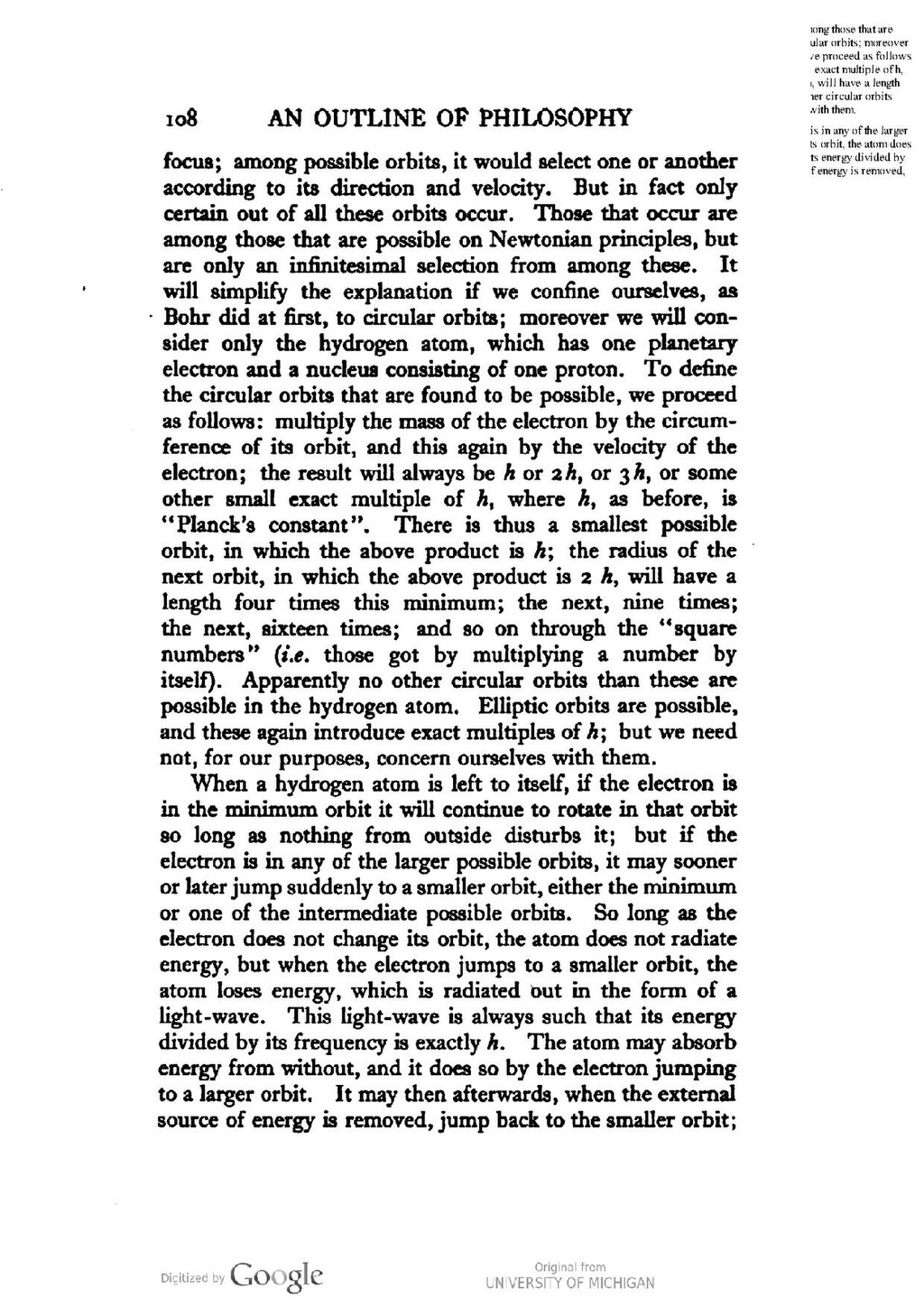focus; among possible orbits, it would select one or another according to its direction and velocity. But in fact only certain out of all these orbits occur. Those that occur are among those that are possible on Newtonian principles, but are only an infinitesimal selection from among these. It will simplify the explanation if we confine ourselves, as Bohr did at first, to circular orbits; moreover we will consider only the hydrogen atom, which has one planetary electron and a nucleus consisting of one proton. To define the circular orbits that are found to be possible, we proceed as follows: multiply the mass of the electron by the circumference of its orbit, and this again by the velocity of the electron; the result will always be h or 2h, or 3h, or some other small exact multiple of h, where h, as before, is "Planck's constant". There is thus a smallest possible orbit, in which the above product is h; the radius of the next orbit, in which the above product is 2h, will have a length four times this minimum; the next, nine times; the next, sixteen times; and so on through the "square numbers" (i.e. those got by multiplying a number by itself). Apparently no other circular orbits than these are possible in the hydrogen atom. Elliptic orbits are possible, and these again introduce exact multiples of h; but we need not, for our purposes, concern ourselves with them.
When a hydrogen atom is left to itself, if the electron is in the minimum orbit it will continue to rotate in that orbit so long as nothing from outside disturbs it; but if the electron is in any of the larger possible orbits, it may sooner or later jump suddenly to a smaller orbit, either the minimum or one of the intermediate possible orbits. So long as the electron does not change its orbit, the atom does not radiate energy, but when the electron jumps to a smaller orbit, the atom loses energy, which is radiated out in the form of a light-wave. This light-wave is always such that its energy divided by its frequency is exactly h. The atom may absorb energy from without, and it does so by the electron jumping to a larger orbit. It may then afterwards, when the external source of energy is removed, jump back to the smaller orbit;
